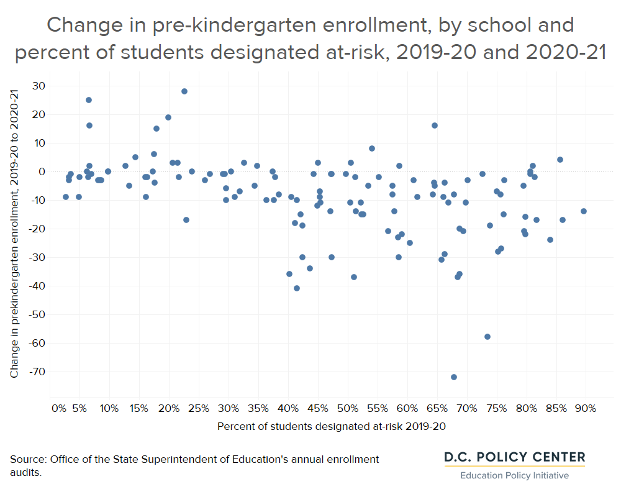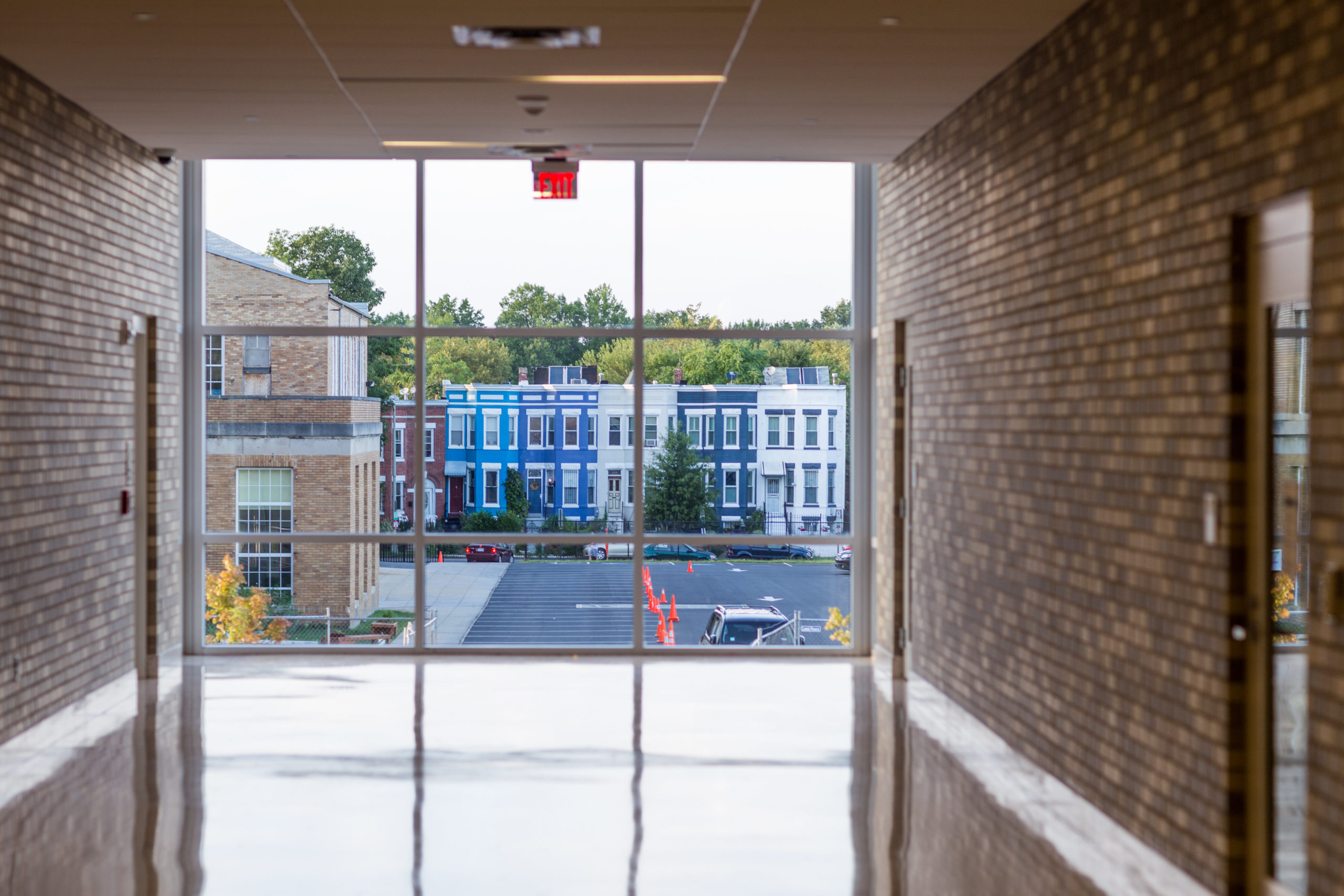On March 17, 2021, Chelsea Coffin, Director of the Education Policy Initiative, testified before the District’s State Board of Education (SBOE) regarding distance learning during the pandemic. You can read her testimony below, and download it as a PDF.
Good evening, Members of the State Board of Education. My name is Chelsea Coffin and I am the Director of the Education Policy Initiative at the D.C. Policy Center, where our education research focuses on how schools connect to broader dynamics in the District of Columbia.
The pandemic put the District’s public schools through an unprecedented stress test and imposed rapid changes on how students learn. I will first share the key challenges of distance learning from our State of D.C. Schools report that suggest priorities for recovery.
- Two of the challenges were outside purely academic needs: mental health and the digital divide. On mental health, the social isolation, stress, and economic hardship[i] brought on by the pandemic also likely increased the chances of anxiety and depression among D.C.’s children and youth.[ii] Even in April of 2020, 54 percent of parents who responded to a survey conducted by ConnectED thought their children were somewhat or very anxious.[iii] Access to technology has improved, but a September 2020 PAVE family survey found that 9 percent of respondents still lacked a device and 6 percent lacked internet – and that basic internet packages were not always adequate for video streaming.[iv]Given these challenges, recovery will depend on addressing students’ needs holistically. Among other supports, students are going to need more mental health resources than before. And students will continue to need access to devices, adequate internet, and tech support in the years to come as we keep what worked with learning virtually.
- The next challenge was providing services to students who receive additional supports, especially the 16 percent of students with disabilities and the 13 percent of students who are English learners.[v] Many services that students with disabilities require were difficult to deliver virtually, and lack of structure during the day could be difficult, too. For some English learners, navigating learning platforms and school communications about resources in English presented additional barriers to learning.This means we need to pay attention to students who faced the greatest challenges during the pandemic, and adapt approaches to meet individual needs. Data and community feedback indicate that students designated at-risk, English learners, and students with disabilities will likely have greater academic needs than during a regular school year.
- The last challenge was communication. Some schools were proactive and clear with their outreach. However, messaging was sometimes confusing and conflicting, especially for parents of multiple children attending different schools – and all at a time when parents were asked to do more than ever.This means a renewed emphasis on family engagement. In some cases, trust levels are very low — many are questioning whether to return to in-person learning, for example. Recovering will mean even more family engagement to rebuild community where it has been lost.
The pandemic has meant also less class time and a general disruption to learning. The 2019-20 school year ended three weeks early, and there is limited live instruction on Wednesdays at most schools. Interrupting years of improvement in learning outcomes,[vi] early data from EmpowerK12 show that D.C. students have likely learned less than they would have in a normal school year, and that students designated at-risk have likely had a greater disruption to learning than others.
This means that students designated at-risk need additional resources as schools recover from the pandemic. The current at-risk weight is 0.226,[vii] which is lower than 0.37 initially recommended in the 2014 Adequacy Study, in part because this estimate did not include overage or SNAP students.[viii] However, an estimated 56 percent of students designated at-risk are eligible for TANF, for example – and do not receive this full recommended at-risk funding.[ix]
In addition to learning outcomes, some data indicate that students designated at-risk likely had a more difficult year.
- An estimated 58 percent of students designated at-risk live in Wards 7 and 8,[x] and 66 percent had access to broadband in these wards; 64 percent had access to a computer, laptop, or tablet before the pandemic.[xi]
- In addition, at least 5,000 students designated as at-risk experienced homelessness in school year 2019-20.[xii] This means they were likely doubled up with another family in crowded conditions for distance learning, or that it may have been difficult to access a stable internet source in a homeless shelter.
- Relevant for the overage population, high school students in our focus groups reported low levels of motivation, and an EmpowerK12 well-being study found that high schoolers reported the lowest levels of confidence during this time.[xiii]
Finally, enrollment declines in pre-kindergarten especially at schools serving the highest percentages of students designated at-risk will have implications for learning in the years to come. Schools serving greater than 43 percent (the city average) of students designated at-risk had an average of 13 fewer students in pre-kindergarten compared to an average of 3 fewer students at other schools. Twenty schools serving more than 43 percent of students designated at-risk lost at least 20 students (an entire classroom).

Over the past year, home and learning has been more intertwined than ever for D.C.’s public school students, often leading to a larger disparity in access to learning opportunities. In addition to correcting for this by providing resources as a city, we also need to rename the “at-risk” funding category and think of students with other needs that should be included.
